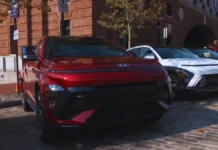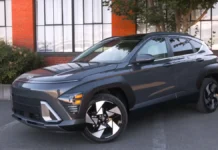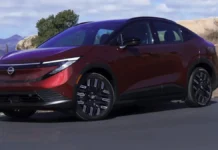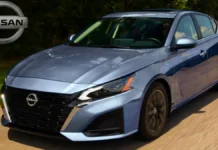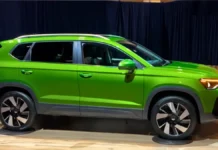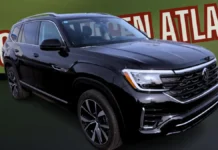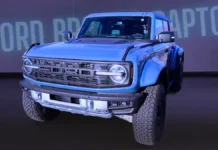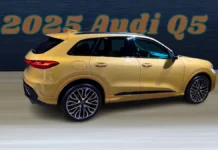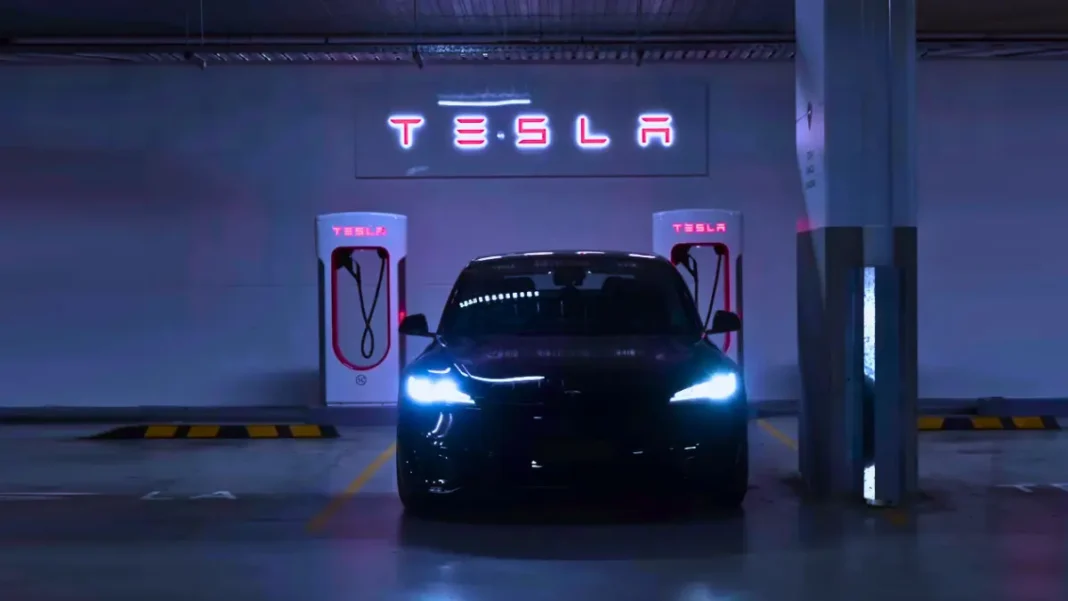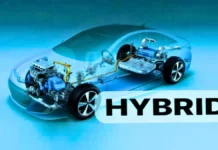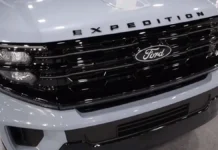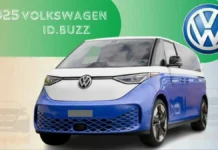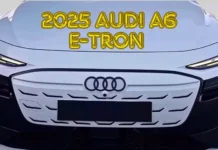Table of contents
- First Things First: Why Real-World Range Differs from the EPA Sticker
- Understanding the 2025 Model 3 Battery Options
- The Highway Haul: Real-World Range Test (Simulated & Aggregated Data)
- City Cruising & Commuting: Where EVs Shine
- The Range Killers (and Savers): Factors You Control
- Demystifying Charging: From Home Outlet to Supercharger Speed
- Charging Costs: Home vs. Public
- Tips for Maximizing Range and Battery Health
- Putting It All Together: Is the 2025 Model 3 Range Enough?
- FAQs
First Things First: Why Real-World Range Differs from the EPA Sticker
Before we jump into the numbers, let’s get one crucial thing straight: the official EPA range estimate you see listed for the 2025 Tesla Model 3 (and any EV) is achieved under very specific, standardized laboratory conditions. Think steady speeds, moderate temperatures (around 70°F or 21°C), minimal use of climate control, and a mix of city/highway driving cycles that might not perfectly mirror your own. It’s a useful benchmark for comparing different EVs, like apples to apples. But your actual mileage will vary. Why?
- Your Driving Style: Lead foot? Expect less range. Smooth and steady? You’ll likely get closer to the estimate.
- Speed Kills (Range): Driving 75-80 mph on the highway uses significantly more energy than cruising at 60-65 mph due to aerodynamic drag.
- Temperature Swings: Extreme cold is the biggest range-zapper. Batteries are less efficient, and you’ll crank up the heat, which draws considerable power. Extreme heat means running the A/C hard, also impacting range, though generally less severely than deep cold.
- Terrain: Driving uphill constantly requires more energy. Downhill allows for regenerative braking, recouping some energy.
- Climate Control: Heating, and to a lesser extent cooling, uses battery power directly. Preconditioning the cabin while plugged in helps mitigate this.
- Payload: A car full of people and luggage weighs more, requiring slightly more energy to move.
Think of it like the MPG ratings on a gasoline car – your actual fuel economy rarely matches the sticker exactly. The same principle applies here. Our goal is to give you a more realistic picture based on common scenarios.
Understanding the 2025 Model 3 Battery Options
The 2025 Tesla Model 3 “Highland” primarily comes in two battery/drive configurations that significantly impact range:
- Rear-Wheel Drive (RWD) Standard Range: Uses an LFP (Lithium Iron Phosphate) battery pack. Known for excellent longevity and ability to be regularly charged to 100% without significant degradation concerns. Generally offers the lowest range of the lineup but is often the most affordable.
- Long Range All-Wheel Drive (AWD): Typically uses an NCA (Nickel Cobalt Aluminum) or similar chemistry battery. Offers more total energy capacity, translating to longer range and quicker acceleration thanks to the dual motors. Tesla usually recommends charging NCA batteries to 80-90% for daily use to maximize lifespan, reserving 100% charges for long trips.
Estimated EPA ranges for the 2025 Model 3 Highland are still settling, but expect figures roughly around:
- RWD: ~270-280 miles
- Long Range AWD: ~330-340 miles
Now, let’s see how those figures translate to the real world.
The Highway Haul: Real-World Range Test (Simulated & Aggregated Data)
This is where range anxiety often kicks in hardest – the long road trip. Highway driving, especially at higher speeds, is demanding on EV batteries.
- Our Test Scenario (Based on common conditions & data):
- Speed: Constant 70-75 mph (113-121 km/h) – typical US highway speeds.
- Temperature: Moderate, ~65°F (18°C).
- Climate Control: Auto AC/Heat set to a comfortable 70°F (21°C).
- Terrain: Relatively flat with minor elevation changes.
- Expected Real-World Highway Range Results:
- 2025 Model 3 RWD (Standard Range): Expect around 210-230 miles (338-370 km). This is roughly 75-82% of the upper EPA estimate. Driving faster (75-80 mph) could push this closer to the 200-mile mark, especially in less ideal conditions.
- 2025 Model 3 Long Range AWD: Expect around 270-295 miles (435-475 km). Again, this represents roughly 80-87% of the upper EPA estimate under these conditions. Higher speeds or headwinds will reduce this further.
- Key Takeaway: At typical highway speeds, conservatively plan for about 20-25% less range than the EPA sticker number, potentially more if you drive faster or face adverse weather. The Highland’s improved aerodynamics likely help mitigate this slightly compared to older models, but physics is physics!
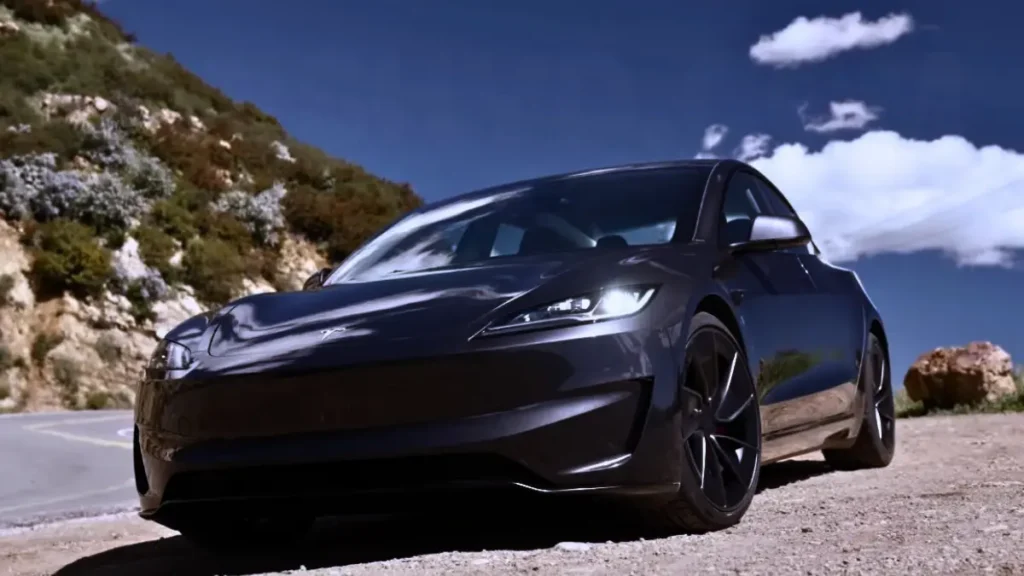
City Cruising & Commuting: Where EVs Shine
Electric vehicles thrive in city environments and stop-and-go traffic, largely thanks to regenerative braking. When you lift off the accelerator or gently apply the brakes, the electric motor acts as a generator, converting the car’s kinetic energy back into electricity and feeding it into the battery.
- Our Test Scenario (Based on typical urban driving):
- Speed: Variable, averaging 25-40 mph (40-64 km/h) with frequent stops.
- Temperature: Moderate, ~65°F (18°C).
- Climate Control: Auto AC/Heat set to 70°F (21°C).
- Expected Real-World City/Commuting Range Results:
- 2025 Model 3 RWD (Standard Range): It’s entirely possible to meet or even slightly exceed the EPA estimate in pure city driving, potentially reaching 270-290 miles (435-467 km) or more, especially with careful driving.
- 2025 Model 3 Long Range AWD: Similarly, achieving or slightly beating the EPA figure is realistic, potentially seeing 330-350 miles (531-563 km) in ideal city conditions.
- Key Takeaway: In lower-speed, stop-and-go environments, the 2025 Model 3 is incredibly efficient. Regenerative braking significantly extends range compared to steady highway cruising. You’ll likely get much closer to, or even surpass, the EPA range estimate during your daily commute or city errands.
The Range Killers (and Savers): Factors You Control
Understanding what impacts your range empowers you to maximize it:
- Speed: The single biggest factor, especially above 60 mph. Slowing down by 5-10 mph on the highway can add significant miles.
- Aggressive Driving: Hard acceleration and braking waste energy. Smooth inputs are key. Use Tesla’s “Chill” acceleration mode if needed.
- Climate Control: Blasting the heat in winter is the biggest auxiliary power draw. Using heated seats/steering wheel (standard on Highland) is more efficient than heating the entire cabin air. Precondition the car while plugged in. In summer, using “Recirculate” and parking in the shade helps.
- Tires & Wheels: Larger wheels (like the optional 19-inch “Nova” wheels) often slightly reduce range compared to the standard 18-inch “Photon” aero wheels (with covers on). Ensure tires are properly inflated.
- Headwinds & Rain: Driving into strong wind increases aerodynamic drag. Rain increases rolling resistance. Both reduce range.
- Elevation: Climbing steep hills consumes significant energy quickly.
Demystifying Charging: From Home Outlet to Supercharger Speed
Okay, you’ve driven some miles, and the battery percentage is dropping. How do you juice it back up? Tesla offers several options:
1. Level 1 Charging (The Humble Wall Outlet – 120V):
- What it is: Plugging the Tesla Mobile Connector into a standard household outlet.
- Speed: Very slow. Expect only 3-5 miles of range added per hour of charging.
- Best Use Case: Occasional top-ups, overnight charging if you only drive short distances daily (e.g., less than 30-40 miles), or as a last resort. It can take multiple days to fully charge an empty battery this way.
- Takeaway: Convenient because outlets are everywhere, but impractical for primary charging unless your daily mileage is very low.
2. Level 2 Charging (The Home & Public Standard – 240V):
- What it is: Using a dedicated 240V circuit, similar to what an electric dryer or oven uses. This requires installing a Tesla Wall Connector or using the Mobile Connector with a 240V adapter plugged into an appropriate outlet (like a NEMA 14-50). Many public charging stations (ChargePoint, Blink, etc.) also offer Level 2.
- Speed: Much faster and the sweet spot for home charging. Depending on your car’s onboard charger (likely 11.5 kW max) and the circuit’s amperage (typically 32A or 48A), expect 25-44 miles of range added per hour.
- Example: A 48A circuit feeding a Wall Connector can add ~44 miles/hour, fully charging even the Long Range battery overnight easily.
- Example: A 32A circuit (common for NEMA 14-50 outlets or lower-power public chargers) adds ~30 miles/hour.
- Best Use Case: Primary home charging. Plug in when you get home, wake up to a “full” battery (set to your desired daily limit, like 80-90%). Also common at workplaces and shopping centers.
- Takeaway: The most practical and cost-effective way to charge daily. Installation costs vary but are often worth it for the convenience.
3. Level 3 DC Fast Charging (Tesla Superchargers & Others):
- What it is: High-voltage Direct Current charging designed for rapid replenishment, primarily used for road trips or quick top-ups when needed. Tesla’s Supercharger network is extensive and seamlessly integrated with the car’s navigation. Other networks (Electrify America, EVgo) exist, and newer Teslas can access some via adapters (like the Magic Dock or NACS partnerships).
- Speed: Very fast, but variable. Depends on the charger’s output (kW), your battery’s state of charge (SOC), battery temperature, and whether another car is sharing power at some older Supercharger stalls.
- Peak Speeds: The 2025 Model 3 can likely handle speeds up to 170 kW (RWD LFP) or 250 kW (Long Range AWD NCA) on compatible V3 or V4 Superchargers.
- The Charging Curve: Crucially, you don’t get peak speed for the whole session. Charging is fastest when the battery is emptier (typically below 50-60% SOC) and slows down significantly as it approaches full (especially above 80%) to protect battery health.
- Typical Session: A charge from 10% to 80% on a 250 kW Supercharger might take 25-30 minutes for the Long Range model under ideal conditions. Getting from 80% to 100% can take almost as long again due to the dramatic slowdown – it’s often faster to unplug at 80% and drive to the next Supercharger.
- Best Use Case: Road trips, adding significant range quickly when far from home. Not recommended for daily charging as it’s more expensive and puts slightly more stress on the battery over the long term compared to Level 2.
- Takeaway: Incredibly convenient for long distances. Understand the charging curve – aim to arrive with a low SOC (10-20%) and often unplug around 80% for optimal travel time.
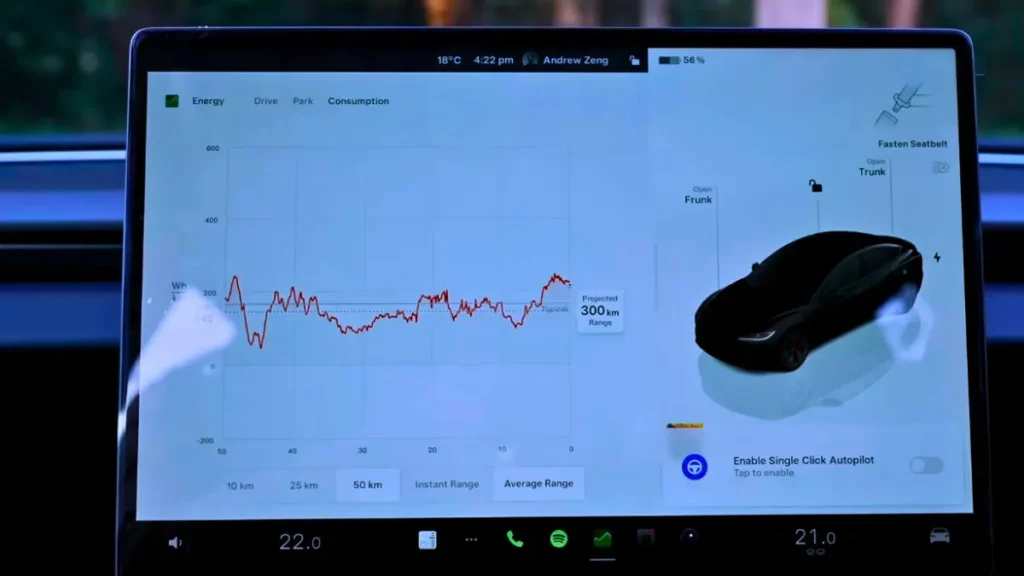
Charging Costs: Home vs. Public
- Home Charging (Level 1 & 2): Generally the cheapest option. You pay your residential electricity rate (cents per kWh). Costs vary wildly by location and time of day (off-peak rates are cheaper). A rough estimate might be 5−15 to “fill up” depending on your battery size and electricity price.
- Public Level 2: Often more expensive than home charging, sometimes billed per hour or per kWh. Can range from free (at some businesses) to significantly marked up.
- DC Fast Charging (Superchargers): The most expensive option, typically billed per kWh consumed. Prices vary by location and time but can be 3-5 times more expensive than home charging. Think of it like paying for the convenience and speed, similar to gasoline prices.
Tips for Maximizing Range and Battery Health
- Charge Strategically: For daily driving, set your charge limit to 80% (NCA Long Range) or 100% (RWD LFP is generally fine). Only charge to 100% on the LR just before a long trip.
- Precondition: Use the Tesla app to warm up or cool down the cabin while plugged in before you leave, especially in extreme temperatures. This uses grid power instead of draining the battery.
- Smooth Driving: Avoid rapid acceleration and braking. Anticipate stops.
- Use Navigation (Even Locally): Tesla’s navigation optimizes routes and preconditions the battery for faster Supercharging if needed on a longer trip.
- Check Tire Pressure: Underinflated tires increase rolling resistance and reduce range.
- Minimize Highway Speed (When Possible): The biggest controllable factor on long trips. Driving 70 mph instead of 80 mph makes a huge difference.
- Use Heated Seats/Wheel: More efficient than blasting the cabin heater in the cold.
Post You May Find Useful:
- What Makes the Tesla Model 3 One of the Most Reliable EVs?
- What Are the Best Floor Mats for Tesla Model 3?
- New Year: Tesla Teases Sub-$30000 Model Set to Launch in 2025
- Tesla Model 3 2025: Worth the Wait? Key Pros, Cons & Verdict
Putting It All Together: Is the 2025 Model 3 Range Enough?
For the vast majority of drivers, the answer is a resounding yes.
- Daily Commuting: Even the RWD model’s real-world city range (~270+ miles) is far more than most people drive daily. Combined with convenient overnight home charging (Level 2), you’ll start each day with plenty of range.
- Road Trips: The Long Range AWD model, with its ~270-295 mile real-world highway range and access to the rapid Supercharger network, makes long-distance travel easy. You’ll typically drive for 3-4 hours, stop for 20-30 minutes to charge (and grab a coffee/bio break), and repeat. The car’s navigation plans these stops automatically. The RWD can also handle road trips, but you’ll need to stop slightly more often or for a bit longer.
The “Highland” updates, particularly potential aerodynamic improvements and possibly refinements in battery/motor efficiency, aim to make the 2025 Tesla Model 3 an even more capable and efficient machine than its predecessors.
While EPA figures provide a starting point, understanding how factors like speed, temperature, and driving style impact your actual range is key to confidently embracing electric driving. Combined with the ease of home charging and the unparalleled speed and coverage of the Supercharger network for longer journeys, the 2025 Tesla Model 3 offers a compelling blend of practicality, performance, and cutting-edge technology. For more information, visit the EPA’s website.
What are your biggest questions or concerns about EV range and charging? Have you experienced real-world range that differs significantly from the sticker? Share your thoughts in the comments below!
Disclaimer: The real-world range figures presented are estimates based on aggregated data, typical EV performance characteristics, and simulated conditions for the anticipated 2025 Tesla Model 3 Highland. Actual results will vary based on individual driving habits, specific vehicle configuration, weather, terrain, and other factors. Charging speeds are also dependent on charger capabilities and battery conditions.
FAQs
1. How does the 2025 Tesla Model 3 real-world range compare to EPA estimates?
Expect 20-25% less range than EPA figures at highway speeds (70-75 mph). City driving may meet or slightly exceed estimates due to regenerative braking.
2. What factors most impact the 2025 Tesla Model 3 Real-World Range ?
Speed (especially above 60 mph), extreme temperatures (cold reduces range up to 30%), aggressive driving, climate control use, and terrain.
3. What’s the difference between RWD and Long Range AWD battery options?
RWD uses an LFP battery (safe for 100% daily charging, ~270-280 EPA miles). Long Range AWD uses NCA (charge to 80% for daily use, ~330-340 EPA miles).
4. How long does it take to charge the 2025 Tesla Model 3?
- Level 1 (120V): 3-5 miles/hour.
- Level 2 (240V): 25-44 miles/hour.
- Supercharger (DC Fast): 10-80% in ~25-30 mins (Long Range).
5. Is the Model 3’s range sufficient for road trips?
Yes. Long Range AWD achieves 270-295 highway miles. Superchargers add ~200 miles in 15 mins, with automatic route planning for charging stops.
6. How can I maximize my 2025 Tesla Model 3’s battery life?
- Charge to 80% daily (Long Range) or 100% (RWD).
- Precondition the battery while plugged in.
- Use heated seats instead of cabin heat in winter.
- Avoid frequent DC fast charging.


